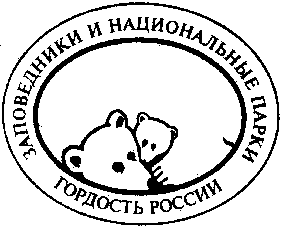VODLOZERO NATIONAL PARK KARELIA-ARKHANGELSK REGION
Vodlozero location in Europe 7kb
Occupying 0.5 million hectares, Vodlozero National Park is the largest national park in Europe and, according to size, it is also one of the most notable natural preserves in the world. According to scientists within the region and abroad, the territory of Vodlozero National Park is a unique piece of untouched wilderness of great scale. The Park's vast expanses of virgin forest offer a special natural treasure, the likes of which have not been preserved anywhere else in contemporary Europe. On this basis, Vodlozero Park should be considered an object of world heritage.
The borders of the Park envelop the extensive watershed of Lake Vodlozero and the Elixa River, which flows down from the spurs of the ridge of the Windy Belt. The Elixa River, meeting together with Lake Vodlozero, forms the most important tributary of Lake Onega. Together with the Vodla River, this makes up the largest watershed in Europe, that of the Neva River with its great lakes Onega and Ladoga.
Vodlozero lake and winter tour route 19kb
In the water system of Vodlozero there is an abundance of flowing lakes, the largest of which (e.g. Monastery, Luzskoye, Nelmozero) are situated in the basin of the chief tributary of Vodlozero, the Elixa River. The largest body of water in the national park is Vodlozero itself; its surface area is 358 sq km. Vodlozero has more than 430 km of shoreline including that of the more than 200 islands on the lake. Elevated areas and littorals of the rivers and lakes of the park are covered by dense, coniferous forests, while watershed lowlands are occupied by massive sphagnus swamps. The forests of the Park are rich with many varieties of berries, mushrooms, and medicinal plants. The swamps themselves are natural plantations of cranberries and rare cloudberries.
The National Park contains rich and varied wildlife. In the forests of the park you may come across bears, lynx, moose, reindeer and many other inhabitants of the virgin Karelian taiga. The breeding ground of the world's largest population of wood grouse is also situated on the territory of the Park. Here are the largest groupings of rare bird species in Europe, including whitetailed eagles, peregrine falcons, ospreys, nesting swans, cranes, and other endangered birds and animals, which are now disappearing everywhere under the pressures of contemporary civilization.
The countless rivers and lakes of the Park abound in fish from the "primordially" clean waters. About 20 kinds of fish live only in Vodlozero.
The climate of the Park is moderate-continental with a lasting, but mild, snowy, winter, a cool summer, and an unpredict able, but lasting, warm fall.
A stable 4 to 5 month period of snow-cover reaching one meter ensures good prospects for the development of winter tourism in the Park. The swift rivers and the abundance of lakes draw boating, rafting, and kayaking enthusiasts to the Park. Evergreen, coniferous forests, uninhabited landscapes, and ancient landmarks make the Park attractive any time of year.
Vodlozero-has a spiritual culture rich in by-gone traditions. The region's Russo-Vigovski monasteries preserve the history of the "Novgorod Assimilation," which explains how the region become a large-scale center of the "Staroobradchestva," a once banned branch of the Russian Orthodox Church.
Vodlozero National Park presents a unique historical territory of the Russian North and an object of the cultural heritage of Russia.
The combined ultimate aim of the activities of Vodlozero National Park is the harmonization of the interrelationship of people and nature.
The lands, forests, water expanses, plants and animals within the boundaries of the Park were given to it for use in perpetuity.
LOCATION OF THE PARK
Vodlozero National Park lies on the territories of two administrative regions, the Republic of Karelia and the Archangel Oblast (Province). The central attraction of the park is Vodlozero Lake, which is situated in the Pudazh region of the Republic of Karelia, 50 km from the shore of Lake Onega and 150 km from the city of Petrozavodsk. The length of the Park stretches more than 180 km from south to north, and occupies the south-eastern part of lake-covered Karelia and remote unpopulated regions of the Archangel Oblast. NATURAL CONDITIONS
Lake Vodlozero is one of the richest regions in Karelia in regard to its natural environment. The landscapes of the park present gently rising plains with considerable post-glacial sediments, ridges, and lake dunes. The ridge of the Windy Belt adjoins the park from the north where the sources of the Elixa river lie.CULTURAL HERITAGE
Vodlozero is an ancient cultural region of the Russian North. Here a vigorous layer of ancient culture has been preserved in its pristine, unspoiled, natural state. Epochs of the neolithic period, traces of ancient portages and fortifications of the Novgorod "Zemleprokhodtzevs" (colonists) who travelled to the White Sea, ancient pogosts (religious, cultural, and administrative centers), and a network of early Russian settlements, which saved the elements of traditional building, all are hidden here. On the Vodlozero islands, old village structures, peasant houses, barns, chapels, and the ancient Ilinski Pogost, adorned by the many domes of the Ili-Proroka Church, and an old fence in the form of fortress-walls are preserved. The architectural complex of Ilinski Pogost is widely recognized as a masterpiece of wooden architecture and is an object of special pride for the National Park. GOALS AND TASKS OF THE PARK
Vodlozero National Park was formed by a resolution of the Soviet of Ministries of the Russian Federation in April 1991, with the goals of preserving the unique natural complex of the watershed of Vodlozero Lake, revitalizing the cultural and historical heritage of the Russian north, and organizing educational tourism for the people of Russia. In accordance with these goals the Park is involved in:
1. Conservation-of natural complexes
2. Preservation of historical and cultural monuments
3. Preservation of ethnic traditions of local inhabitants
4. Reintroduction of the traditional system of population setelement
5. Development of traditional methods of natural resource use by the
local population
6. The working out and introduction of an ecologically based system
of rational resource use on the basis of advanced technology and the
experience of traditional resource use of the local citizens
7. The development of scientific investigation of the region
8. The rebirth of the spiritual culture of the region, folk trades,
and handicrafts and
9. The development of tourism and recreation/leisure activities,
including international tourism.
LEGAL STATUS OF THE PARK
Vodlozero National Park is an independent legal entity, which was established as a government enterprise, and which acts on the basis of "Polozheniye" (position) and other specialized, nonnative acts. The park has an independent bank account, its own staff of conservation, scientific, administrative, engineering and technical workers and specialists, and its own technical and production base. TERRITORIAL ORGANIZATION OF THE PARK
Vodlozero National Park has a special design plan in accordance with which it is divided into functional zones relating to the planned use (or non-use) of the resources in each area. Side by side with reserves and zones of strict resource preservation in the territory of the park, various sorts of utilitarian use of the natural resources are permitted. These include the limited, and ecologically rational development of forestry and hunting, crude processing of raw materials, traditional farming, game fishing, and the gathering and processing of mushrooms, berries, and pharmaceutical raw materials. All these activities will be done in strict accordance with ecological principles to ensure the safety of the resources. FINANCIAL RESOURCES
Vodlozero National Park is funded by the government budget, however, for the realization of further development it must also attract its own financial support by means of utilitarian activities. Therefore, tourism, especially foreign tourism, has the greatest potential to become a basic source of income in this area. Vodlozero National Park would welcome joint activities in realizing the scientific and socio-cultural programs of the park, and also the development of tourism and business undertakings which will adhere to the goals and tasks stated above.
ADDRESSES
Generally, it is better to contact Petroszavodsk office because communications work better. Kuganavolok has only manual phone, also when you call within Russia. Fax communication "via Norway" works best, receiving fax is physically in Petroszavodsk.
Email:
vodloz@karelia.ru (updated: 20th Sept 1999)
Tourism and foreign ties service in Petrozavodsk
Russia185014 Karelia
Petrozavodsk
Parkovaja 44
National Park Vodlozersky
Vladimir Tigushkin
Tel. (in Petrozavodsk) +7-814-99379 (automatic)
Fax (in Petrozavodsk) +47-789-18597 (via Norway, works fine)
Email: available later
Tourism and foreign ties service (Kuganavolok):
Karelia 186154
Pudotzhky rayon
Kuganavolok
National Park Vodlozersky
Vladimir Tigushkin
Russia
Tel: Russia-Karelia-Pudotskij-Kuganavolok- 20182, 20116 (manual)
Fax: +7-095-2926511 VODLOZERO, box no. 019438 (automatic)

